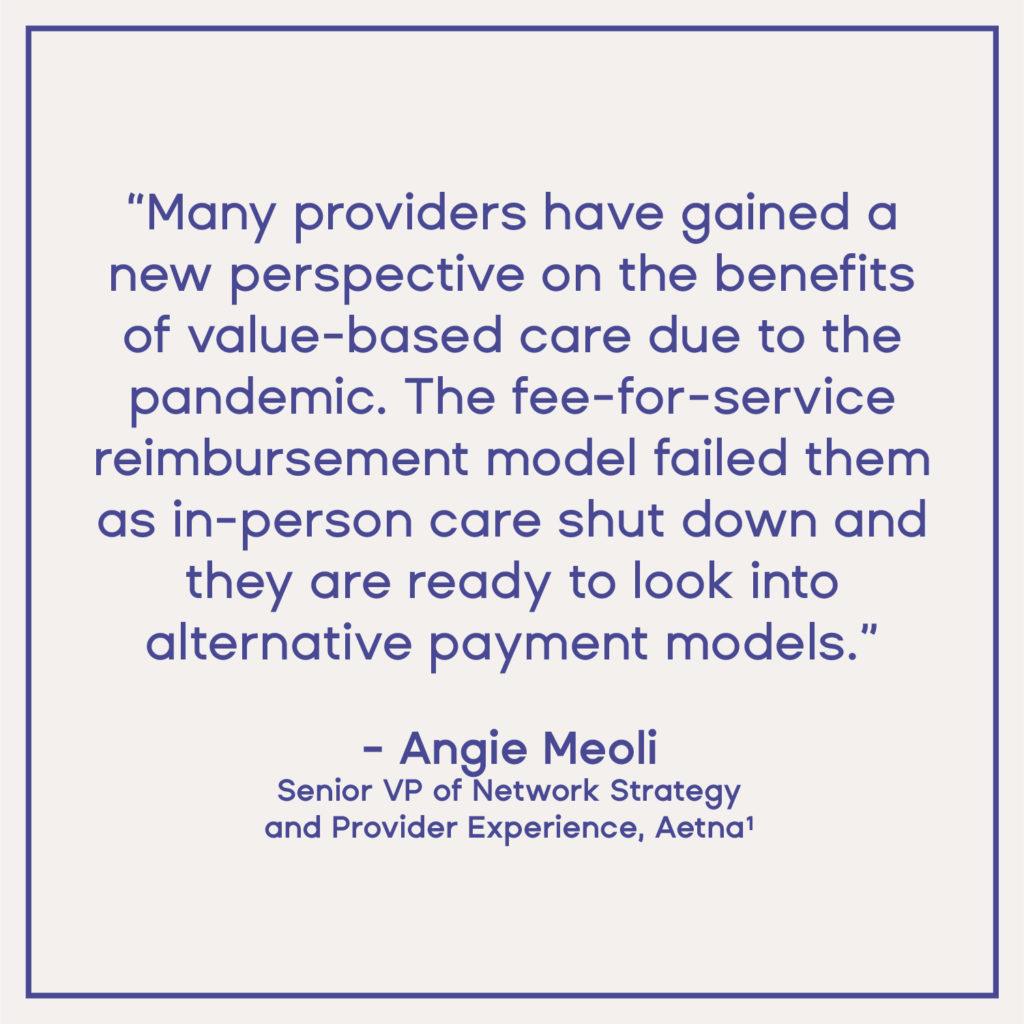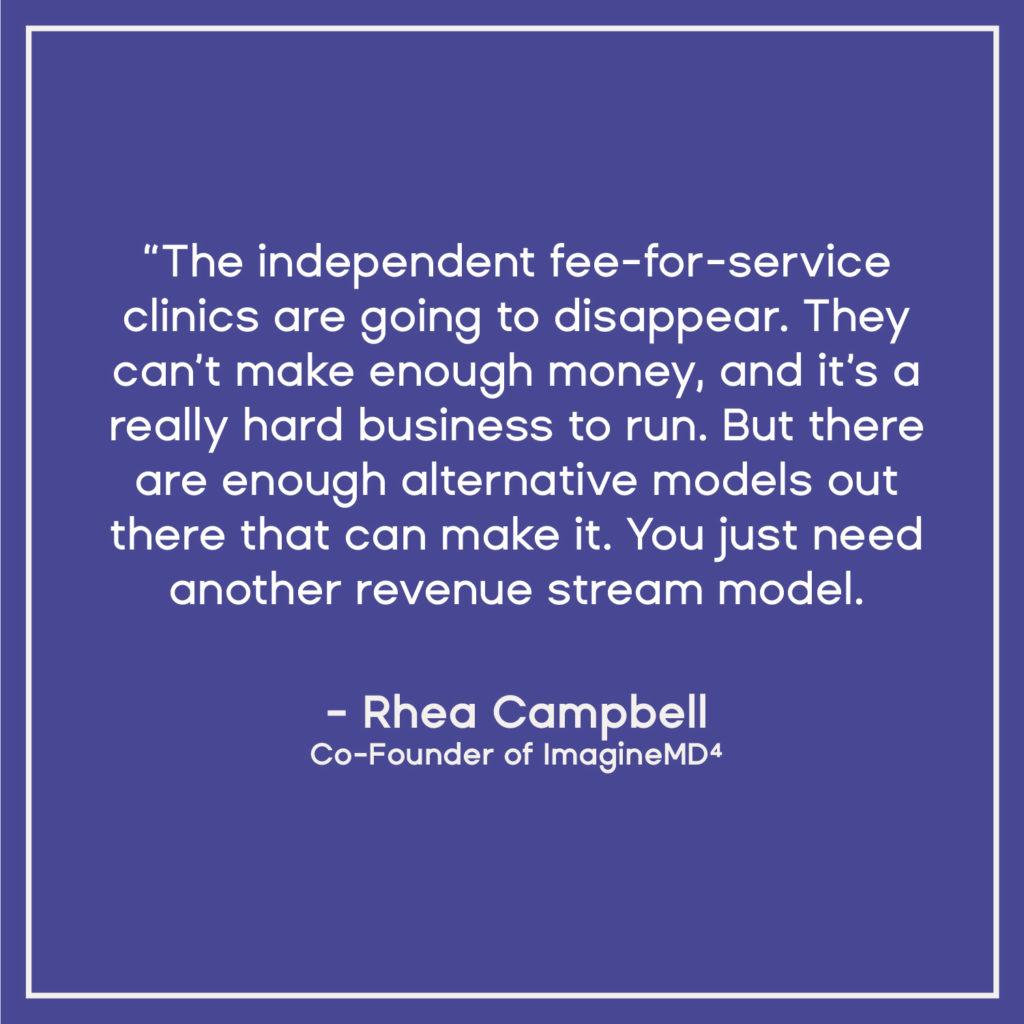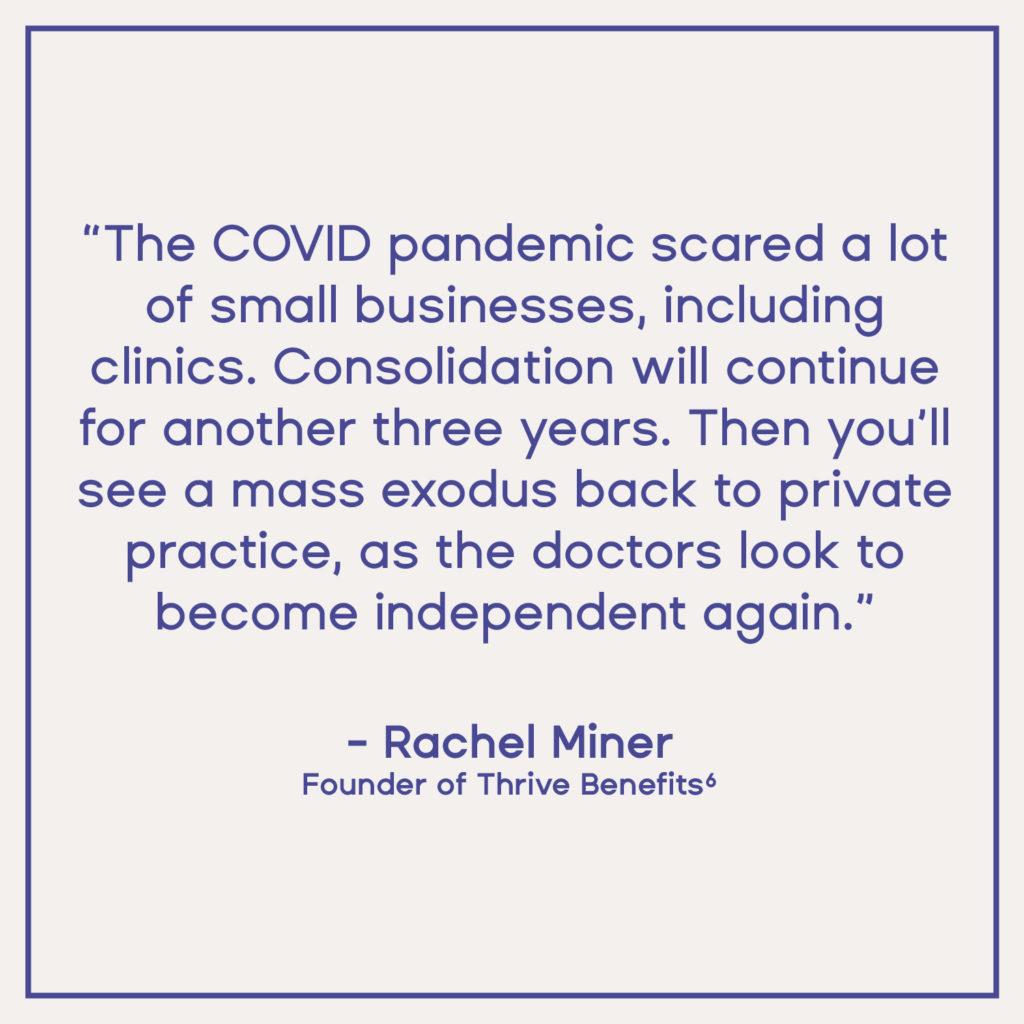Starting in March of 2020, healthcare practices began to see the profound impact of COVID. As the pandemic forced quarantines, lockdowns, and isolation, providers saw an immediate decline in patient visits for elective and routine medical care, and therefore a corresponding drop in revenues. In-person patient visits were redistributed to emergency rooms and hospitals, if needed. Less emergent cases were likely to go untreated as patients simply waited for a safer environment in which they could access care. At the same time, many healthcare workers were suddenly burdened by COVID-related care, while many others felt the financial crunch of an empty office. In a fee-for-service model, no patients in the office means no revenue.
The pandemic served as a wake-up call to many providers by demonstrating the structural vulnerabilities to fee-for-service models. While such reimbursement mechanisms have been traditionally conceived as risk averse, every revenue stream is ultimately exposed to certain dependencies: when revenues are tied to services, exogenous events that impact the standard flow of patient visits reduce cash flow. Yet some value-based healthcare models–notably Direct Contracting–provide financial structures that reduce the exposure to service volume by replacing it with responsibility for the total-cost-of-care of patients. Faced with the dynamics presented by COVID, many providers are more responsive to opportunities to diversify the types of compensation they receive for patient care.
COVID Effects on Healthcare’s Fee-For-Service
Declining income tends to grab people’s attention, and providers are no different. As the pandemic struck, primary care physicians felt the COVID effects on healthcare dramatically. But lost revenues weren’t the only changes they felt. Many providers, particularly those in charge of their own clinics, also experienced added administrative burdens, forced to evaluate the viability of their business and manage office staff and budgets while determining how to adapt. This wasn’t the reason most went into medicine in the first place, which made many reconsider their situation.
Change can be difficult, even for providers in a dynamic healthcare system. But many soon realized that fee-for-service healthcare had some major shortcomings amidst the pandemic. COVID effects on healthcare revealed the underlying risks of this approach and prompted providers to reevaluate value-based healthcare models. Notably, surveys show that 55% of providers now see the financial benefits of value-based healthcare models. This marks a significant increase compared to 2018 when only 38% saw such benefits. 2,3
COVID Effects on Healthcare Services
With in-person patient visits declining, alternatives were needed. One alternative that quickly expanded involved remote telehealth services. Providers were able to convince government and private payers that telehealth systems were viable solutions to care, and many patients were also advocated for these services as well. In fact, even as the COVID effects on healthcare have lessened, roughly 40% of patients still want to be able to access care via telehealth services.5 It is therefore likely that telehealth (and virtual care more broadly) will play a significant part in evolving value-based healthcare models going forward. The pandemic served as an important catalyst that accelerated the adoption of this care modality in value-based healthcare models.
Dealing with COVID Effects on Healthcare
Faced with the many changes that COVID has precipitated in the healthcare system, some providers have considered practice buy-outs. Having a hospital or private equity firm purchase their business offered a quick way to escape financial and administrative woes. But in the long run, this solution is not ideal for many previously-independent providers. In the process, providers will find themselves once again working for a healthcare organization under a fee-for-service system. And once again, they’ll be less able to focus on patient care quality and patient relationships.
In contrast, true value-based healthcare models offer just the opposite. Through collaboration, communication and trust, these models invite providers, patients and payers a chance to improve overall care. They also provide financial safeguards to volume exposure through capitation revenue streams, rather than one focused on fee-for-service. The COVID effects on healthcare are increasingly making providers more aware of these benefits. The pandemic’s effects on the healthcare system have been devastating, but that doesn’t mean the situation can’t be used to create a healthcare system that’s better and more resilient for tomorrow.
1. Waddill, K. (2021). Value-Based Care Challenges, Opportunities for Payers in 2021. HealthPayerIntelligence.com. retrieved from https://healthpayerintelligence.com/news/value-based-care-challenges-opportunities-for-payers-in-2021
2. Ibid.
3. LaPointe, J. (2018). Clinicians Less Optimistic About Value-Based Care Than Execs. RecycleIntelligence.com. Retrieved from https://revcycleintelligence.com/news/clinicians-less-optimistic-about-value-based-care-than-execs?__cf_chl_captcha_tk__=pmd_8YSQAtlnJx6mBenTYBZKR9oXFl7LVdLutsiz8Yx1f98-1632200713-0-gqNtZGzNAvujcnBszQjl
4. Cook, D. (2021). The disappearing primary care practice. BenefitsPro.com. Retrieved from https://www.benefitspro.com/2021/09/13/the-disappearing-primary-care-practice/
5. Waddill, 2021.
6. Cook, 2021.





